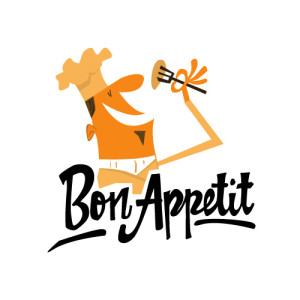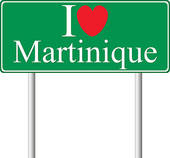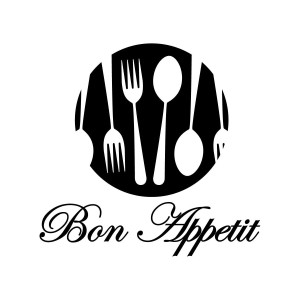 In between the standardized testing and weather days that have plagued my schedule over the past few weeks, my French 1 students have been learning the vocabulary and structures they need to both talk about their homes and understand authentic resources about French homes. Although I would have preferred to introduce this vocabulary in a more contextualized way, I found myself relying on a more traditional format for this unit due to the limited time frame that I had and the amount of vocabulary I wanted to introduce. Because these students had done so much reading throughout their previous unit on food, I wanted to focus on oral activities rather than written texts to reinforce this vocabulary. As a result, I provided the students with a visual vocabulary list of rooms and furnishings (House packet) and then devoted one to two (shortened) class periods reviewing each room’s vocabulary using a variety of (mostly) communicative activities. For each room, I included some or all of the following activities:
In between the standardized testing and weather days that have plagued my schedule over the past few weeks, my French 1 students have been learning the vocabulary and structures they need to both talk about their homes and understand authentic resources about French homes. Although I would have preferred to introduce this vocabulary in a more contextualized way, I found myself relying on a more traditional format for this unit due to the limited time frame that I had and the amount of vocabulary I wanted to introduce. Because these students had done so much reading throughout their previous unit on food, I wanted to focus on oral activities rather than written texts to reinforce this vocabulary. As a result, I provided the students with a visual vocabulary list of rooms and furnishings (House packet) and then devoted one to two (shortened) class periods reviewing each room’s vocabulary using a variety of (mostly) communicative activities. For each room, I included some or all of the following activities:
- A short educational video to present the vocabulary for the furnishings in the room being studied. Because I prepared my list before choosing the videos, the words are not identical. If I teach this unit next year, I may modify my list to mirror the words in the videos, although I do feel the students can benefit from the exposure to additional vocabulary.
- A Google Presentation featuring two to three photographs of the “room of the day.” I would project the first room and ask students questions about what they saw in the picture: Il y a un lit? De quelle couleur est le couvre-lit? Qu’est-ce qu’il y a sur la table de chevet? Est-ce qu’il y a un tapis sous le lit ? I would then project the second picture and give the students five minutes to practice describing the room to a partner. I then called on two to three randomly-selected students and asked them to describe the room to the class. I assigned a formative assessment grade and written feedback to the students who were chosen for this informal presentation. Note: I will modify this presentation to include photographs of rooms in French homes, rather than randomly selecting Google Images if I teach this unit again.
- After these presentations, the students completed an information gap with a partner to further reinforce their vocabulary acquisition and oral fluency. I used the following three types of information gap activities in this unit:A) Matching: Student A and Student B each have a paper with the same pictures (labeled with either numbers or letters), but in a different order. Students will take turns describing their pictures and sharing the corresponding numbers/letters until they each have a list (on a separate paper) of all of the number/letter matches.B) Same/Different: Student A and Student B each have a paper with several numbered pictures. They discuss each one in order to determine whether it is the same or different on their papers. They then write either “M” for Même or “D” for Différent (on a separate paper) for each item.C) What’s missing: Student A and Student B each have a picture from which some items have been whited out. The students discuss their pictures in order to determine which items are missing from each one.
- After the information gap partner activity, I projected a short authentic video which featured the “room of the day.” Due to the difficulty of the videos, I paused them frequently to ask questions using the new vocabulary, but did not expect the majority of the students to understand more than the main idea of the video.
- Lastly, I projected an additional room photograph and required the students to write a paragraph describing the room. This paragraph provided an additional formative assessment/opportunity for feedback for these students.
Note: Although I had intended to include household chores in this unit (and this vocabulary is included in the packet), I will not be able to do so before our quarter ends next week. Therefore, I will do a mini-unit on this topic after our Spring Break.
Here’s a link to Google Presentation with the photographs and videos I used in this unit: https://docs.google.com/presentation/d/1I_vShMkd6RbGkhej8ltMAny-QNnpAb5b6vmpbVeNKc0/edit?usp=sharing
Here’s a document with some of the information gap activities that I used in this unit: Pair Comm. Activities
After these introductory vocabulary activities, the students completed the following learning stations (House Unit Learning Stations):
Computer Station: Students completed a series of interactive activities designed to reinforce the vocabulary for the unit.
Reading Station: Students completed an IPA-style interpretive task based on an authentic blog post comparing French and American houses.
Speaking Station: Students completed two different pair activities at this station. In one, they discussed the respective house pictures in order to identify differences. In the second, they took turns placing the magnets in the rooms on a commercial game and described their arrangement to a partner who placed his/her magnets in the same location. I listened to the students and provided feedback and a formative assessment grade at this station.
Writing Station: Students wrote a written description of their (real or imaginary) homes for a home exchange website. This assignment will serve as the rough draft/formative assessment for the presentational writing portion of their IPA.
After the students have rotated through these stations, they will take an IPA based on the topic of a home exchange: House-Unit-IPA , House IPA Reading
Interpretive Listening: The students will watch a short video—“La maison préférée des Français” and answer English comprehension questions.
Interpretive Reading: The students will read three different descriptions of homes currently listed on a home exchange website and complete an IPA-style interpretive task.
Interpersonal Speaking: Students will discuss the photographs of the homes whose descriptions they read and discuss whether or not they would like to stay in each one and why.
Presentational Writing: Students will write a description of their own home that could be posted on the home exchange website. Students are given the option of describing either their actual or an imaginary home for this task.
Although this unit does not rely exclusively on authentic materials to introduce and practice vocabulary, I think these activities will help the students memorize a significant number of high-frequency vocabulary items. I will be curious to see how the more traditional vocabulary introduction will influence the students’ success on the IPA.








 My apologies to anyone who tried to download the IPA from this post: http://wp.me/p4SSyG-56 . I inadvertently linked the wrong document for the sample IPA. I’ve now corrected my mistake in the original post. Please accept my sincere apologies and chalk the error up to my being an overworked, sleep-deprived teacher and not a completely incompetent one. In the future, I’d be eternally grateful to any of you who are willing to take the time to make me aware of any similar, glaring errors !
My apologies to anyone who tried to download the IPA from this post: http://wp.me/p4SSyG-56 . I inadvertently linked the wrong document for the sample IPA. I’ve now corrected my mistake in the original post. Please accept my sincere apologies and chalk the error up to my being an overworked, sleep-deprived teacher and not a completely incompetent one. In the future, I’d be eternally grateful to any of you who are willing to take the time to make me aware of any similar, glaring errors !